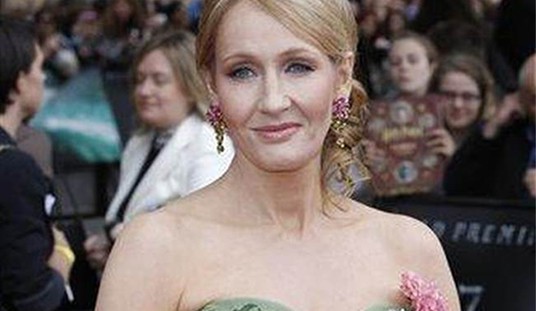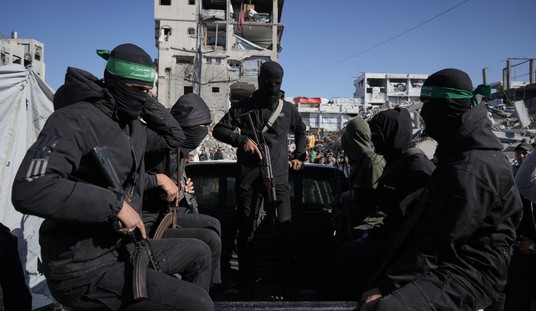Of course, the Blogosphere has its own Cassandra–the nom de blog of the hostess of Villainous Company, who links to this Washington Post op-ed by Robert Kagan on a topic we’ve looked at a few times as well–the recent “forgetfulness” of the left’s media and politicians on the bipartisan support the idea of overturning Saddam Hussein enjoyed in the 1990s:
If you read even respectable journals these days, including this one, you would think that no more than six or seven people ever supported going to war in Iraq. A recent piece in The Post’s Style section suggested that the war was an “idea” that President Bush “dusted off” five years after Bill Kristol and I came up with it in the Weekly Standard.
That’s not the way I recall it. I recall support for removing Saddam Hussein by force being pretty widespread from the late 1990s through the spring of 2003, among Democrats and Republicans, liberals and conservatives, as well as neoconservatives. We all had the same information, and we got it from the same sources. I certainly had never based my judgment on American intelligence, faulty or otherwise, much less on the intelligence produced by the Bush administration before the war. I don’t think anyone else did either. I had formed my impressions during the 1990s entirely on the basis of what I regarded as two fairly reliable sources: the U.N. weapons inspectors, led first by Rolf Ekeus and then by Richard Butler; and senior Clinton administration officials, especially President Bill Clinton, Madeleine Albright, William Cohen and Al Gore.
I recall being particularly affected by the book Butler published in 2000, “The Greatest Threat: Iraq, Weapons of Mass Destruction, and the Growing Crisis of Global Security,” in which the chief U.N. inspector, after years of chasing around Iraq, wrote with utter certainty that Hussein had weapons and was engaged in a massive effort to conceal them from the world. “This is Saddam Hussein’s regime,” Butler wrote: “cruel, lying, intimidating, and determined to retain weapons of mass destruction.”
A big turning point for me was the confrontation between Hussein and the Clinton administration that began in 1997 and ended in the bombing of Iraq at the end of 1998. The crisis began when Hussein blocked U.N. inspectors’ access to a huge number of suspect sites (I’m still wondering why he did that if he had nothing to hide). The Clinton administration responded by launching a campaign to prepare the nation for war. I remember listening to Albright compare Hussein to Hitler and warn that if not stopped, “he could in fact somehow use his weapons of mass destruction” or “could kind of become the salesman for weapons of mass destruction.” I remember Cohen appearing on television with a five-pound bag of sugar and explaining that that amount of anthrax “would destroy at least half the population” of Washington, D.C. Even as late as September 2002, Gore gave a speech insisting that Hussein “has stored away secret supplies of biological weapons and chemical weapons throughout his country.”
In his second term Clinton and his top advisers concluded that Hussein’s continued rule was dangerous, if not intolerable. Albright called explicitly for his ouster as a precondition for lifting sanctions. And it was in the midst of that big confrontation, in December 1997, that Kristol and I argued what the Clinton administration was already arguing: that containment was no longer an adequate policy for dealing with Saddam Hussein. In January 1998 I joined several others in a letter to the president insisting that “the only acceptable strategy” was one that eliminated “the possibility that Iraq will be able to use or threaten to use weapons of mass destruction.” That meant “a willingness to undertake military action” and eventually “removing Saddam Hussein and his regime from power.” The signatories included Francis Fukuyama, Richard Armitage and Robert Zoellick.
About a year later, the Senate passed a resolution, co-sponsored by Joseph Lieberman and John McCain, providing $100 million for the forcible overthrow of Hussein. It passed with 98 votes. On Sept. 20, 2001, I signed a letter to President Bush in which we endorsed then-Secretary of State Colin Powell’s statement that Hussein was “one of the leading terrorists on the face of the Earth.” We argued that “any strategy aiming at the eradication of terrorism and its sponsors must include a determined effort to remove Saddam Hussein from power in Iraq.” That letter, too, was signed by Fukuyama, Eliot Cohen, Stephen Solarz, Martin Peretz and many others.
I recall broad bipartisan support for removing Hussein right up to the eve of the war. In March 2003, just before the invasion, I signed a letter in support of the war along with a number of former Clinton officials, including deputy national security adviser James Steinberg, ambassador Peter Galbraith, ambassador Dennis Ross, ambassador Martin Indyk, Ivo Daalder, Ronald Asmus and ambassador Robert Gelbard.
Cassandra adds:
A lot of people who, before George Bush was ever elected, were calling for the removal of Hussein from office, by force if necessary, for reasons that included far more than weapons of mass destruction.
These same people are now claiming that they were “deceived” by George Bush.
How, pray tell, did W “deceive” them while he was still Governor of Texas and Bill Clinton was President? This is a question the mainstream media never seems to ask. And with all their resources, the media never seem to be able to contrast the statements of these pundits and politicians with their stances just a few years back.
Why is that, I wonder?
I guess Kagan’s article and Cassandra’s post answer my question from a couple of weeks ago–there’s no way the memory hole hurts the ozone layer, considering how much use it’s gotten these past couple of years.










Join the conversation as a VIP Member